Blog
2 October 2025
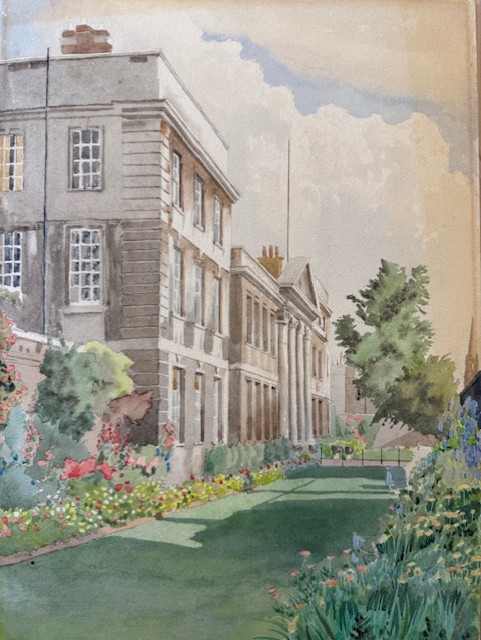
Although there are prints of Emmanuel, as of other Oxbridge colleges, from the eighteenth century onwards, the College’s collections contain rather few oil paintings or watercolours depicting Emmanuel before the twentieth century. Modern paintings and prints of Emmanuel – a serendipitous range of items – can offer a snapshot of tastes and trends across the past century. The watercolour above, perhaps dating from the 1930s is a valuable witness, recording Emmanuel’s unusualness among Cambridge colleges in having a front garden, once with the lawns and colourful bedding shown in the watercolour. Extreme right, along with the spire of Our Lady and the English Martyrs, are the railings, removed during World War Two, and replaced in the 1990s.
Of twentieth-century images of Emmanuel, the majority focus on the front of the Wren Chapel itself, or as seen across Front Court. From 1965-1966 there is a striking print of the Chapel Front by Walter Hoyle (1922-2000):
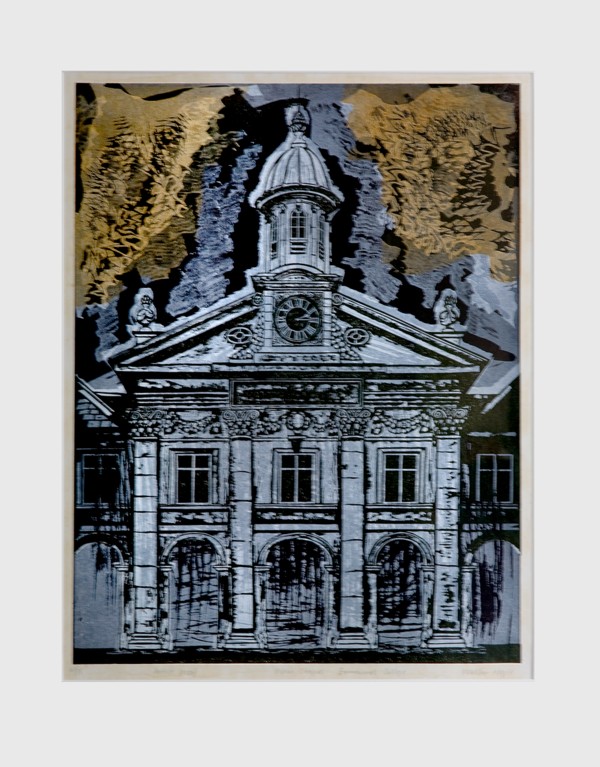
Painter, illustrator and printmaker, Hoyle was a member of the artists’ group based at Great Bardfield in Essex and later taught printmaking in Cambridge.
Another vision of the Chapel Front (c.1960; oil on paper) was commissioned by the Emmanuel Art Society from the Irish abstract and landscape artist Camille Souter (1929-2023):
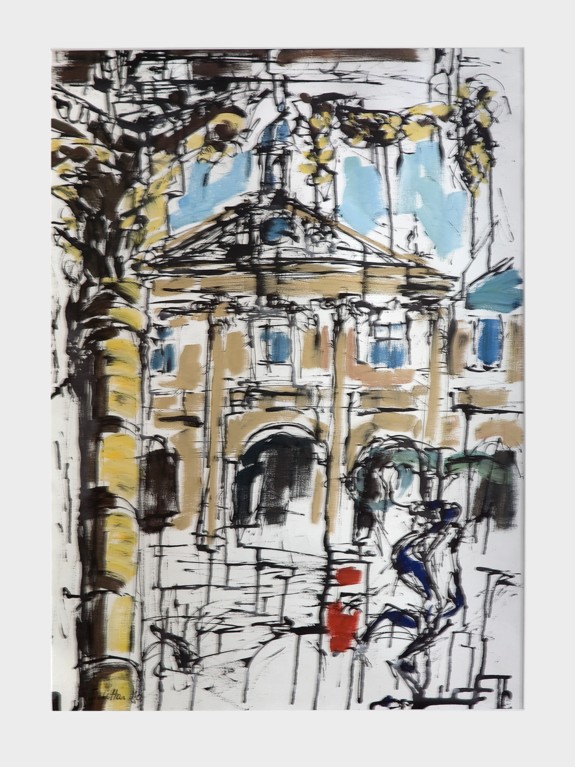
The artist and printmaker Andrew Ingamells (b. 1956), who specializes in architectural subjects, has produced a modern take on traditional prints of the Chapel Front, just as he has been commissioned to reinvent David Loggan’s late-seventeenth bird’s eye views of many Oxbridge colleges, including Emmanuel:
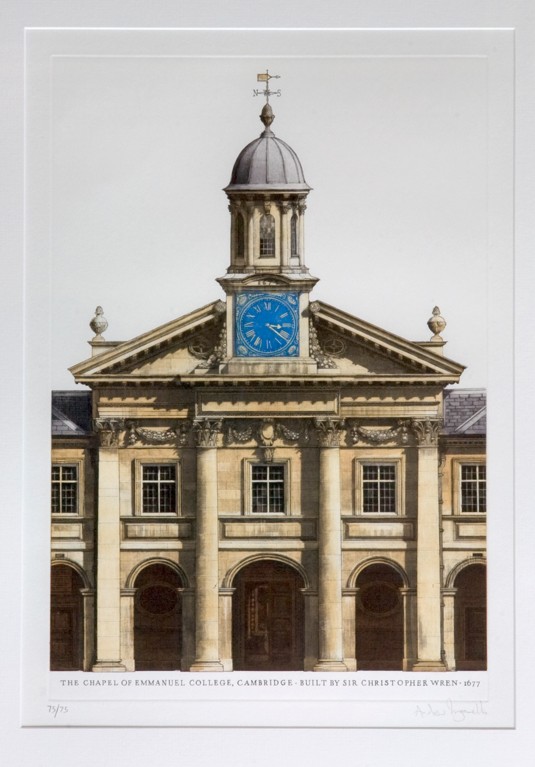
Among views of the Chapel Front across Front Court are the lithographs in various colour ways (1959-1962) by Julian Trevelyan (1910-1988), a significant figure in developing modern print technique. A purposeful black cat, near the centre of the composition, seems to be surveying the scene as much as any human viewer:
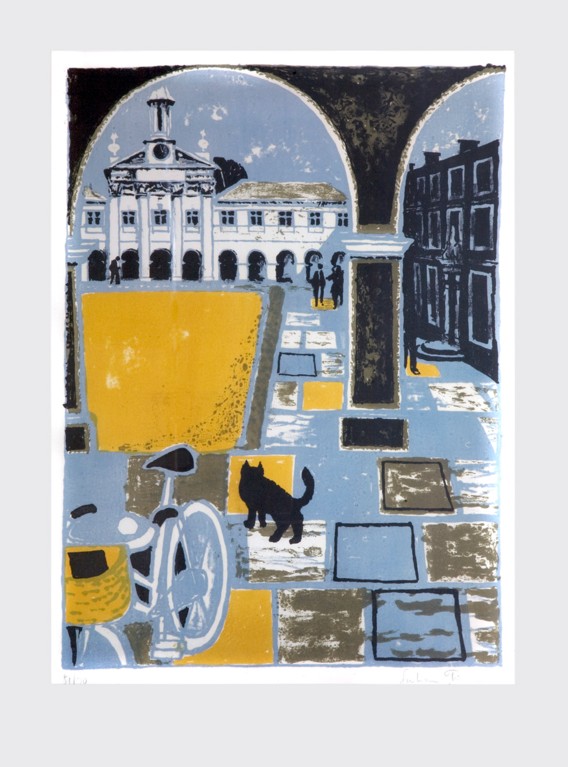
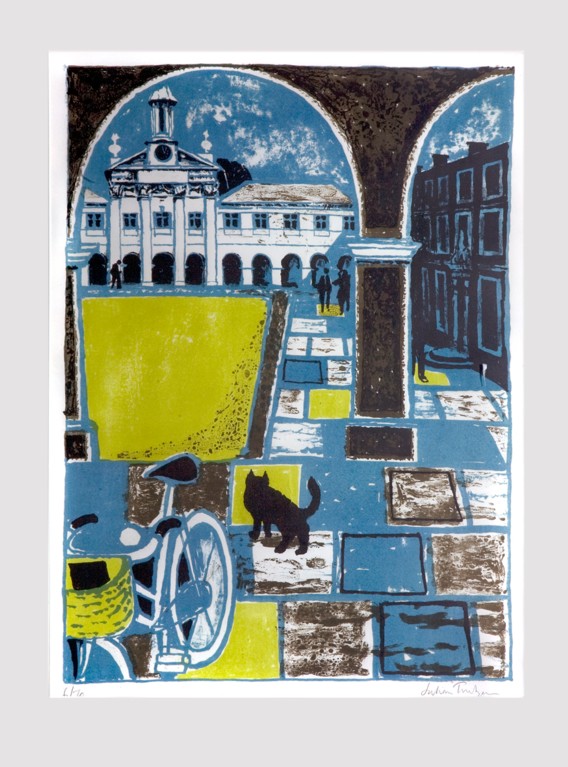
A more representational approach to a similar prospect is taken by the watercolourist Dennis Roxby Bott (b. 1948), who often takes architecture and the built environment as his focus, in this print based on a watercolour:
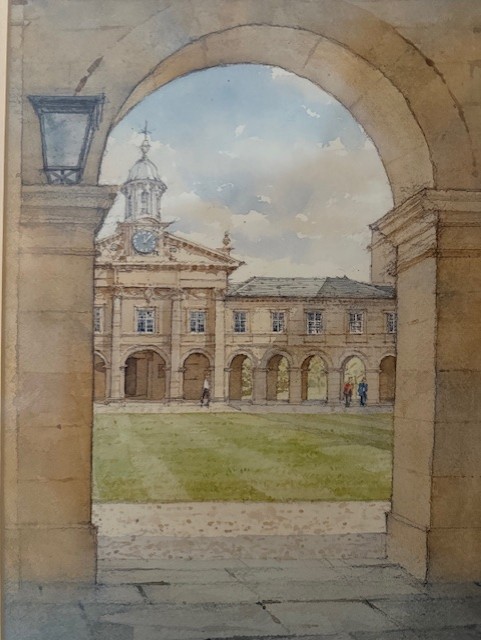
Hugh Casson (1910-1999), architect of the Raised Faculty Building on the Sidgwick Avenue site, published the illustrated books Casson’s Oxford and Casson’s Cambridge, with associated series of limited edition prints, among which is his view of the Chapel Front across Front Court:
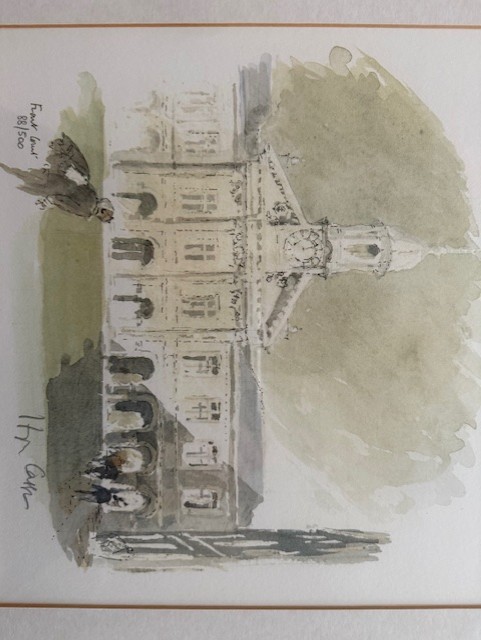
In one of his three prints commissioned by the College for the 1984 Quatercentenary, the East Anglian artist and printmaker Richard Sell sought out an original perspective, framing the Chapel Front as seen through a window in the Westmorland Building:
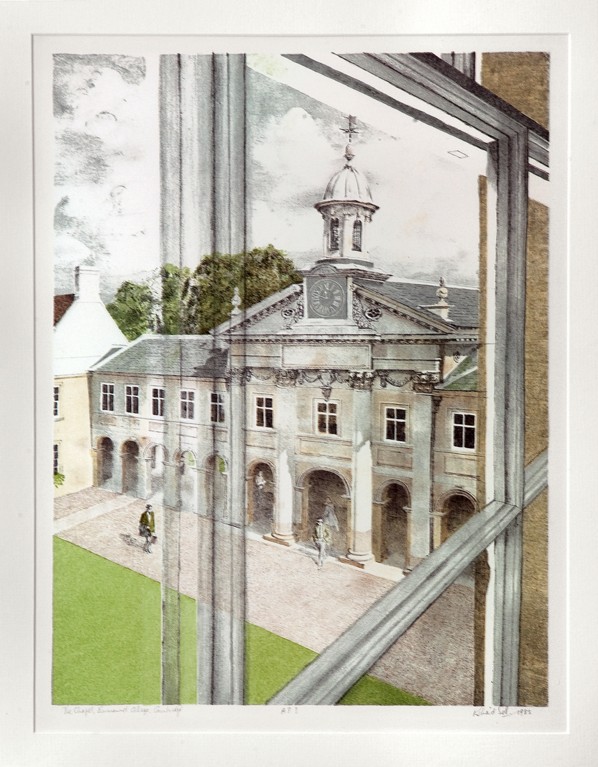
Painted images of Emmanuel outside Front Court are less frequent. F. A. Molony painted several watercolours of the Paddock, including one looking across the Pond (with resident swan) to the Fellows’ Garden and plane tree:
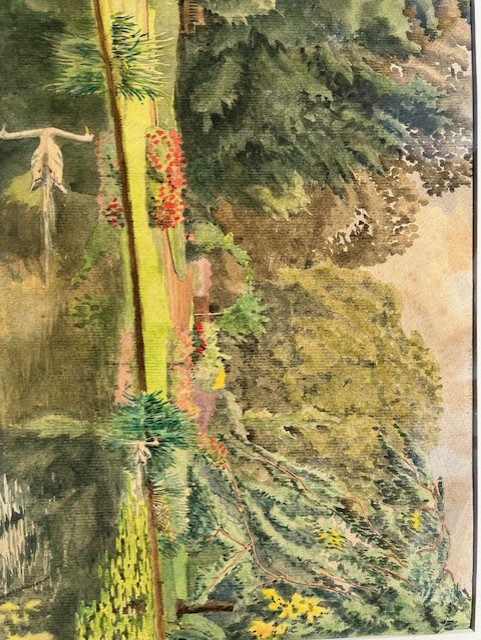
Molony also painted the view of the Chapel across the Pond (two swans, plus cygnet), showing the Victorian Master’s Lodge, which would be demolished and replaced in the 1960s. (And no, that’s not three UFOs landing in the Paddock but damage to the painting):
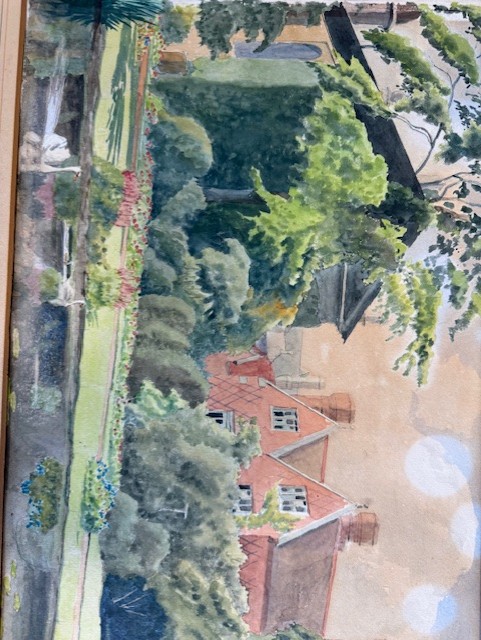
Molony (d. 1944) was a Victorian soldier who, after serving in Sudan and the Boer War, took up watercolour painting and in later life settled in Cambridge. The compositions of some of his paintings of Cambridge colleges may be based on contemporary postcards.
At least that cannot be said of Camille Souter’s painting of the Chapel, also from the Paddock:
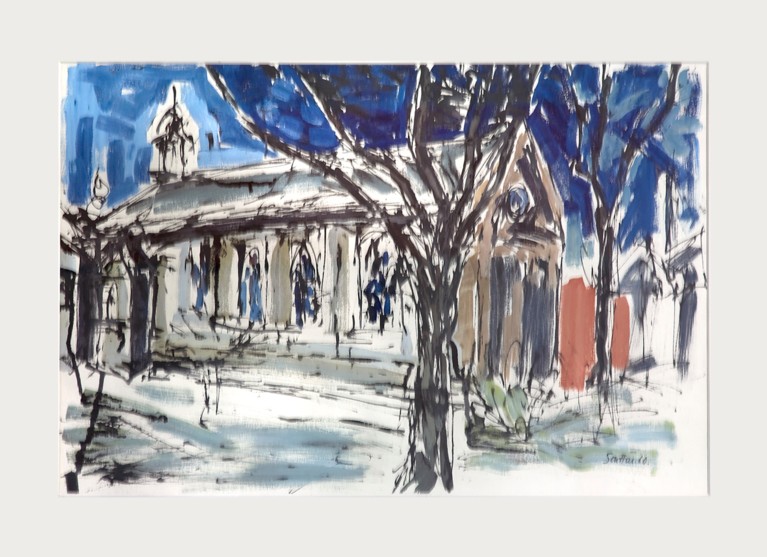
Richard Sell’s other prints highlight less familiar angles of Emmanuel, such as the Chapel Cloisters, or the doorways into the Hall, with their fine iron gates of 1762 (as captured in Sell's preliminary drawing and in the finished print):
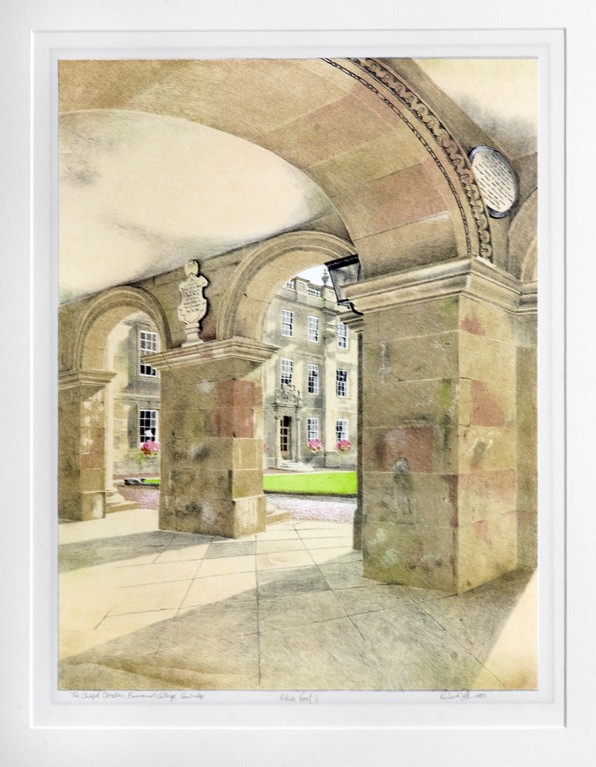
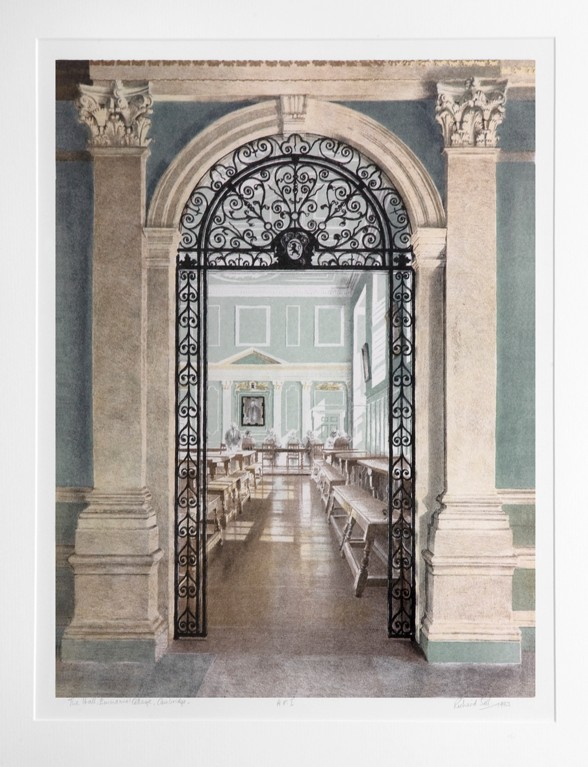
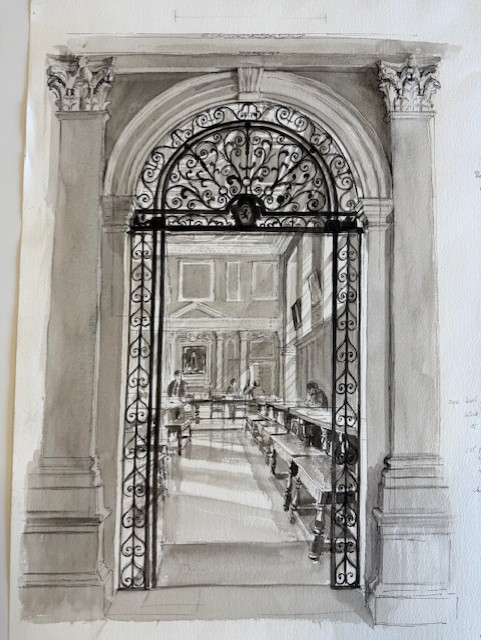
By contrast, images of streetscapes near Emmanuel – such as an oil painting of part of St Andrew’s Street between Emmanuel and Christ’s, or a watercolour of the quaint cottages that once stood where North Court now faces the street (picked up on Ebay in 2025!) – are a reminder that while the town around them changes the fabric of Cambridge colleges tends to remain, with adaptations, much the same:
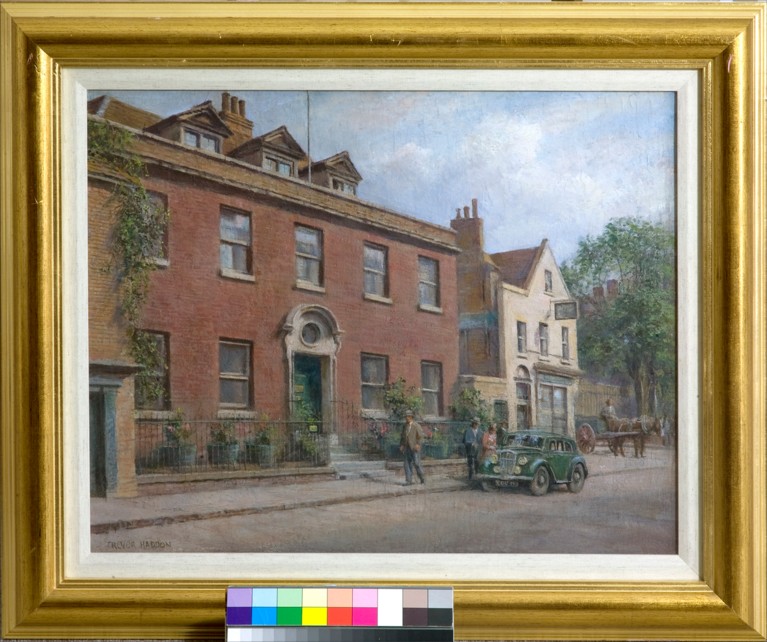
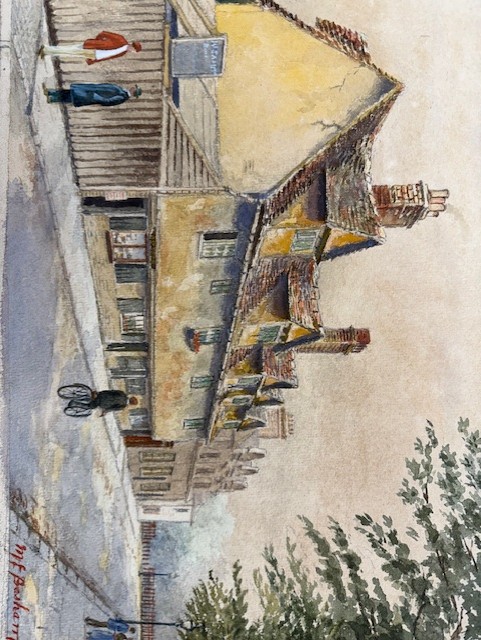
Barry Windeatt (Keeper of Rare Books)